You’ve done the work. The literature review is complete, the data is collected, your results are laid out, and now you’re writing your final chapter. But here’s the real test: Can your conclusions answer your original research questions?
Too many researchers fall into the trap of writing vague, disconnected conclusions that don’t tie back to the core of their study. This weakens the entire thesis or report, leaving readers (and reviewers) unconvinced of the work’s value.
This guide will help you make sure your conclusions directly address your research questions, giving your study the strength, clarity, and coherence it deserves.
Why Strong Conclusions Matter
Conclusions are more than a formality—they’re your final word, your closing argument, and the moment when everything comes full circle.
When conclusions directly respond to your research questions:
- You show logical coherence across the entire paper.
- You validate the purpose of your study.
- You leave a lasting, impactful impression.
Without this connection, your findings may seem disconnected or incomplete.
🎯 Think of your conclusions as your final answers in a long-form investigation. If the questions were the beginning, the conclusions are your destination.
Revisit the Research Questions Before Writing Conclusions
Before writing your conclusions, go back to where it all began—your research questions.
These were likely listed in Chapter 1 (or Chapter 2 depending on your structure), and everything that followed—from methodology to analysis—was designed to answer them.
Action Step:
Write down each research question on a separate line. You’ll be using them one by one as you draft your conclusions.
This practice grounds you in purpose. It keeps you from drifting into general summaries or unrelated insights.
The Role of Chapter 5 in Shaping Conclusions
If you’re writing a thesis or research report, Chapter 5 is typically where conclusions and recommendations are presented. It’s not just a summary of the results—it’s your opportunity to tie together everything with clear, evidence-backed responses.
Your conclusions in Chapter 5 should:
- Refer to data or patterns identified in Chapter 4.
- Respond specifically to each research question.
- Avoid introducing any new data or unrelated topics.
Think of it as a structured Q&A:
- Q: What was your research question?
- A: What did you conclude based on your findings?
Step-by-Step: How to Write Conclusions That Answer Your Research Questions
1. Restate Each Research Question Clearly
Use the same language you originally used. This ensures clarity and makes it obvious to the reader what question you’re addressing.
Example: “Research Question 1: How does time management affect academic performance among university students?”
2. Summarize the Key Findings Relevant to That Question
Briefly refer to the data, without repeating everything from the results section.
Example: “The analysis showed that students who used structured time-blocking strategies scored on average 15% higher than those who didn’t.”
3. State Your Conclusion Directly
Make your conclusion short, confident, and grounded in your findings.
Example: “Thus, effective time management practices, particularly time-blocking, positively influence academic performance.”
4. Explain the Implication (Optional but Strong)
If relevant, share what this conclusion means for policy, practice, or further study.
Example: “These results suggest that universities could improve student outcomes by integrating time management modules into freshman orientation.”
Repeat this process for each research question to create a clear, systematic conclusion section.
Writing Tips for Strong, Question-Based Conclusions
- Mirror your phrasing: If your research question asked “How does X affect Y?” your conclusion should answer with “X affects Y by…”
- Be data-driven: Never make unsupported claims. Every conclusion should reflect your analysis.
- Keep it concise: You’re summarizing—not re-analyzing. Aim for 3–6 sentences per research question.
Example Paragraph: Strong Conclusions in Action
Research Question 2: What are the primary challenges faced by small business owners during economic downturns?
The data revealed that the three most commonly reported challenges were decreased customer spending, supply chain disruptions, and limited access to financial support. 74% of participants cited cash flow as their biggest concern.
Conclusion: Small business owners face significant operational and financial constraints during economic downturns, with cash flow management emerging as the most critical issue.
Implication: These insights suggest a need for accessible emergency funding programs tailored to small enterprises.
Common Mistakes When Writing Conclusions
Avoid these errors that weaken your conclusions:
- ❌ Ignoring one or more research questions
- ❌ Writing broad general statements with no data reference
- ❌ Introducing new data or theories not mentioned before
- ❌ Using emotional or speculative language
Bonus Checklist: Are Your Conclusions Strong?
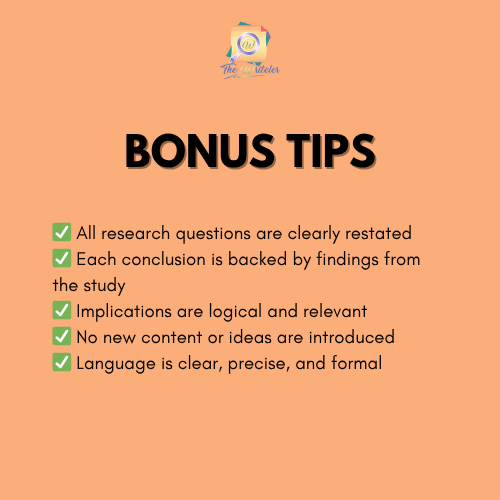
✍️ Need Help Writing Your Chapter 5 Conclusions?
Work With The Writeler Co. and Finish With Confidence
Writing conclusions that tie directly to your research questions is not always easy—especially when you’ve been immersed in the details of your study for months.
Let The Writeler Co. help you:
- Refine your Chapter 5 conclusions for clarity and strength
- Ensure every research question is answered thoroughly
- Polish your academic writing to match university or journal standards
- Transform your data into clear, professional insight
📩 Visit The Writeler Co. today and get expert feedback that helps you finish strong.
Final Thoughts: Conclusions That Connect Are Conclusions That Matter
In research, you are judged not only by your findings—but by how well you answer the questions you set out to explore.
By aligning your conclusions directly with your research questions, you show that your work is purposeful, thoughtful, and complete. It builds trust with readers, examiners, and decision-makers.
🎓 Final Tip: Start your conclusion-writing session by reading your research questions aloud. Let them guide you. Your answers are already in your work—now it’s time to make them clear.

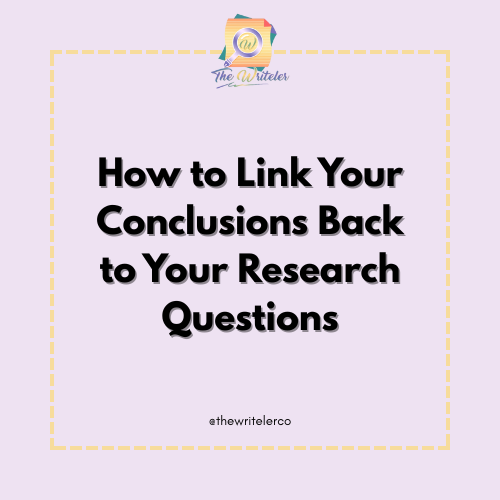
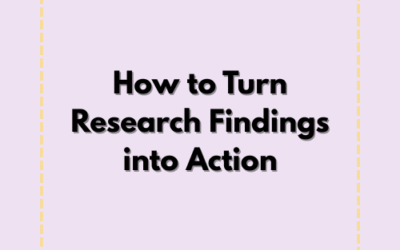
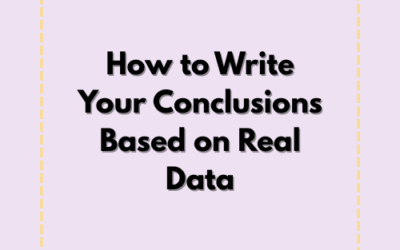
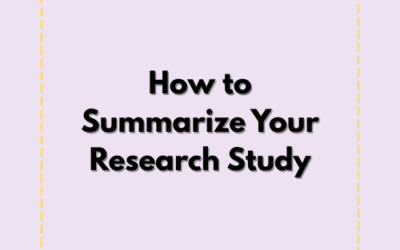
0 Comments